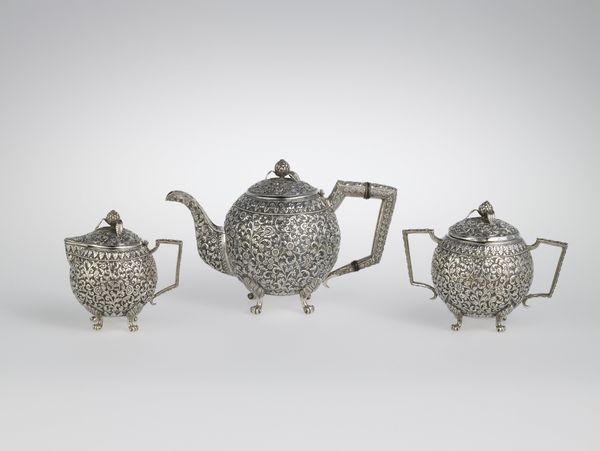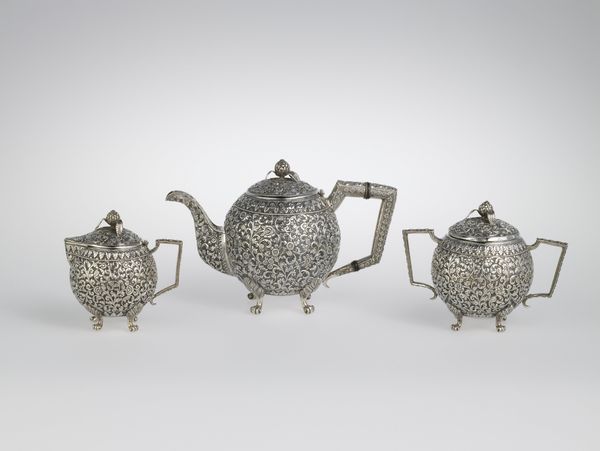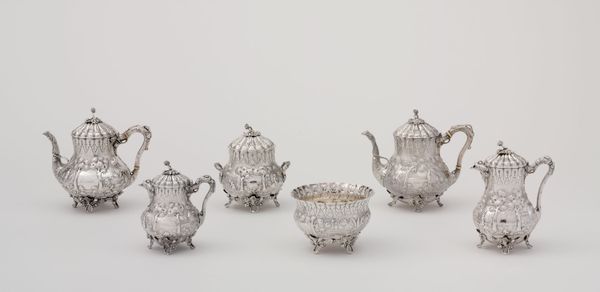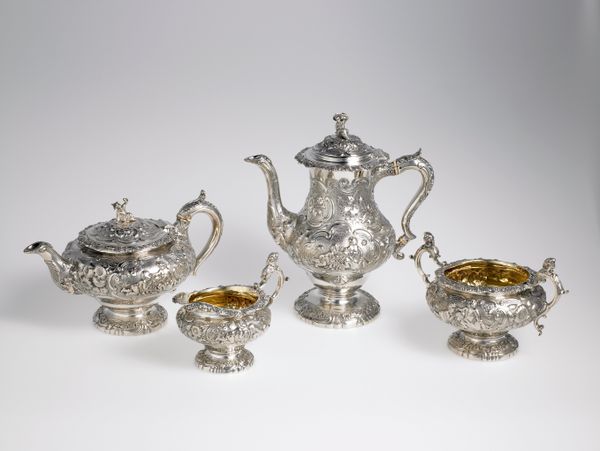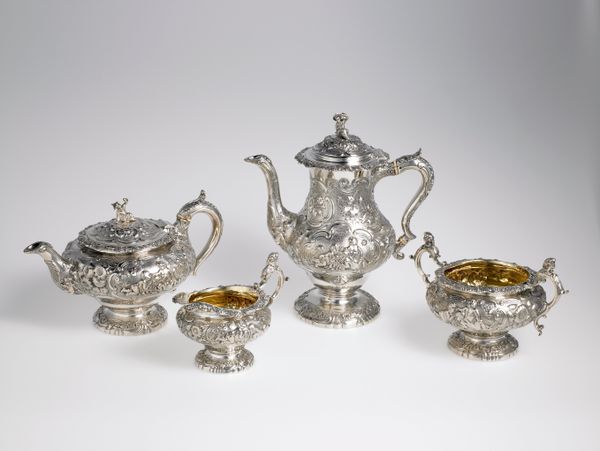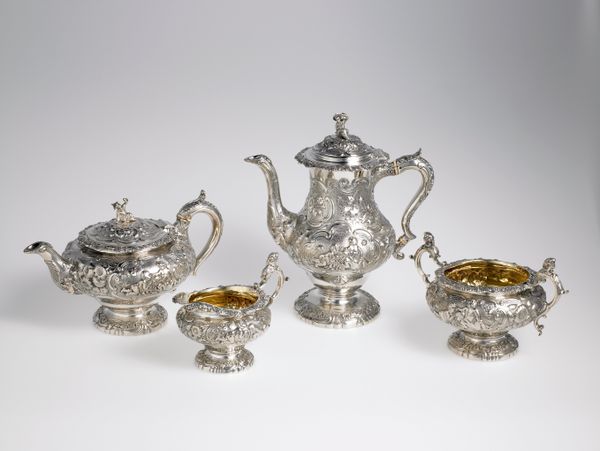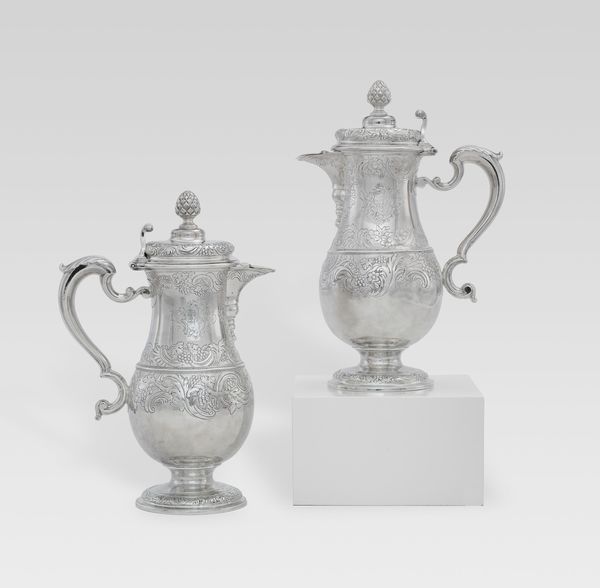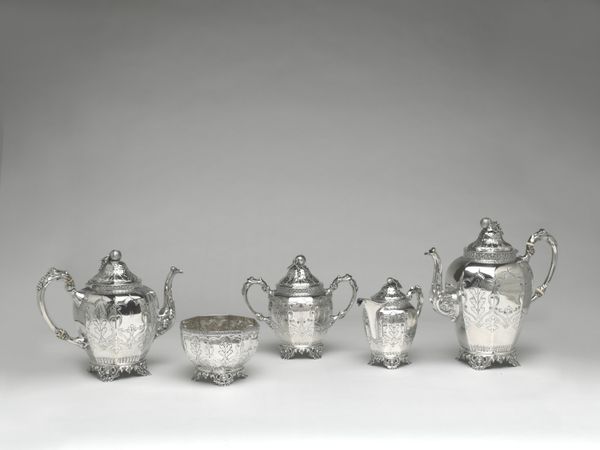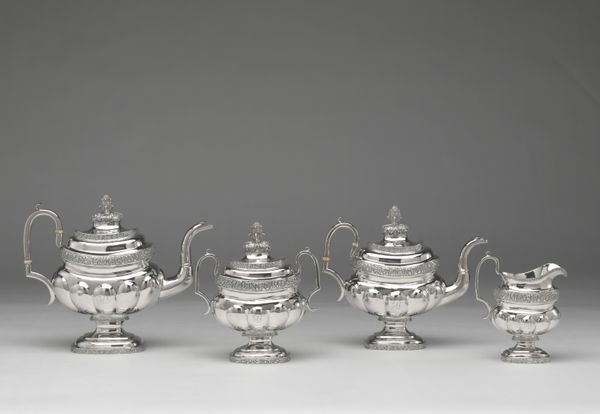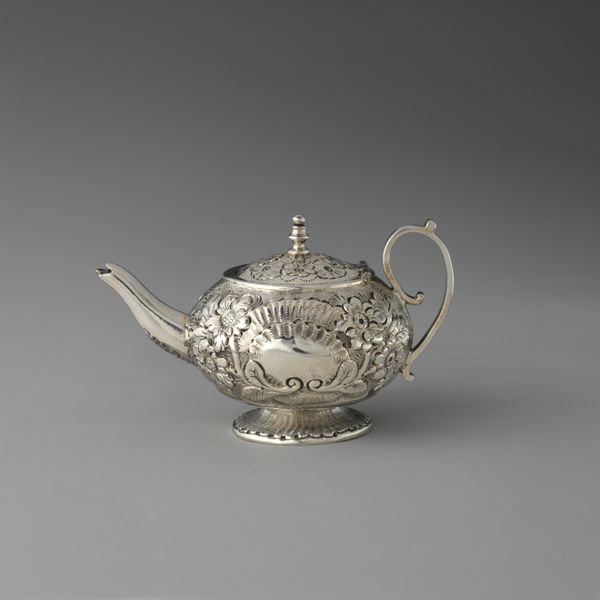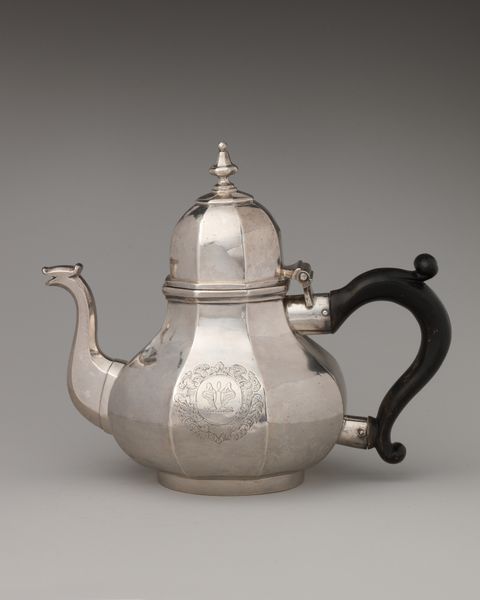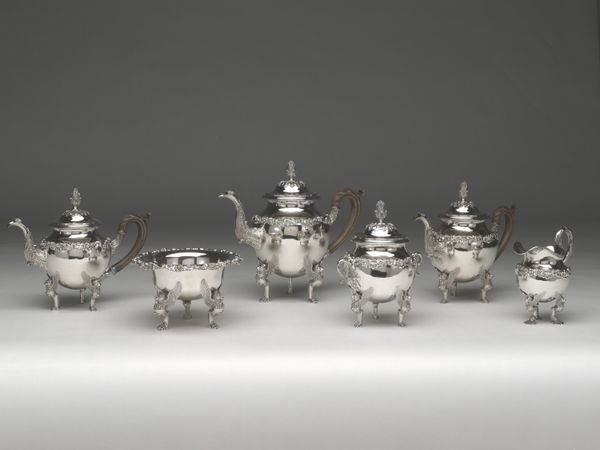
silver, metal
#
silver
#
metal
#
ceramic
#
islamic-art
#
decorative-art
Dimensions: 5 1/4 x 6 1/2 x 4 1/16 in. (13.34 x 16.51 x 10.32 cm) (overall)
Copyright: Public Domain
Editor: This is a sugar bowl made before 1888, and attributed to an anonymous artist, residing at the Minneapolis Institute of Art. It's crafted from silver, possibly other metals, and it showcases very intricate detailing. I find the texture of the objects, all those repeated tiny marks, so fascinating, but also very labour intensive. What can you tell me about it? Curator: That’s a great observation about labor. When looking at pieces like this, especially within the decorative arts, it’s crucial to consider the socio-economic context. Who made this? Not just the named artist, but the many hands involved in extracting the silver, refining it, and then the skilled artisans who shaped and decorated it. Think about the labor conditions of the time. Where would something like this silver have come from, and for what purposes, initially? Editor: So it’s not just about the aesthetic beauty, but about the whole system that enabled its creation? Were these bowl’s made for use, or simply for decorative displays? Curator: Precisely. These objects blurs the lines between high art and craft. Considering its function - a sugar bowl. Sugar itself had a history tied to colonization, enslaved labor, and global trade. Does knowing this change how you see the object? The vessel almost contains that whole history. Editor: It really does put it in a different light. I was initially just admiring the detail, but understanding the labor and material history adds a much deeper layer. Curator: Right, so analyzing its materiality and the processes that brought it into being gives us a much fuller understanding. It becomes a lens through which we can examine broader social and economic systems. Editor: I never considered examining the commodity chain that brings us decorative objects and the ways in which they were produced before. It's more involved than simply observing its artistic details!
Comments
No comments
Be the first to comment and join the conversation on the ultimate creative platform.
